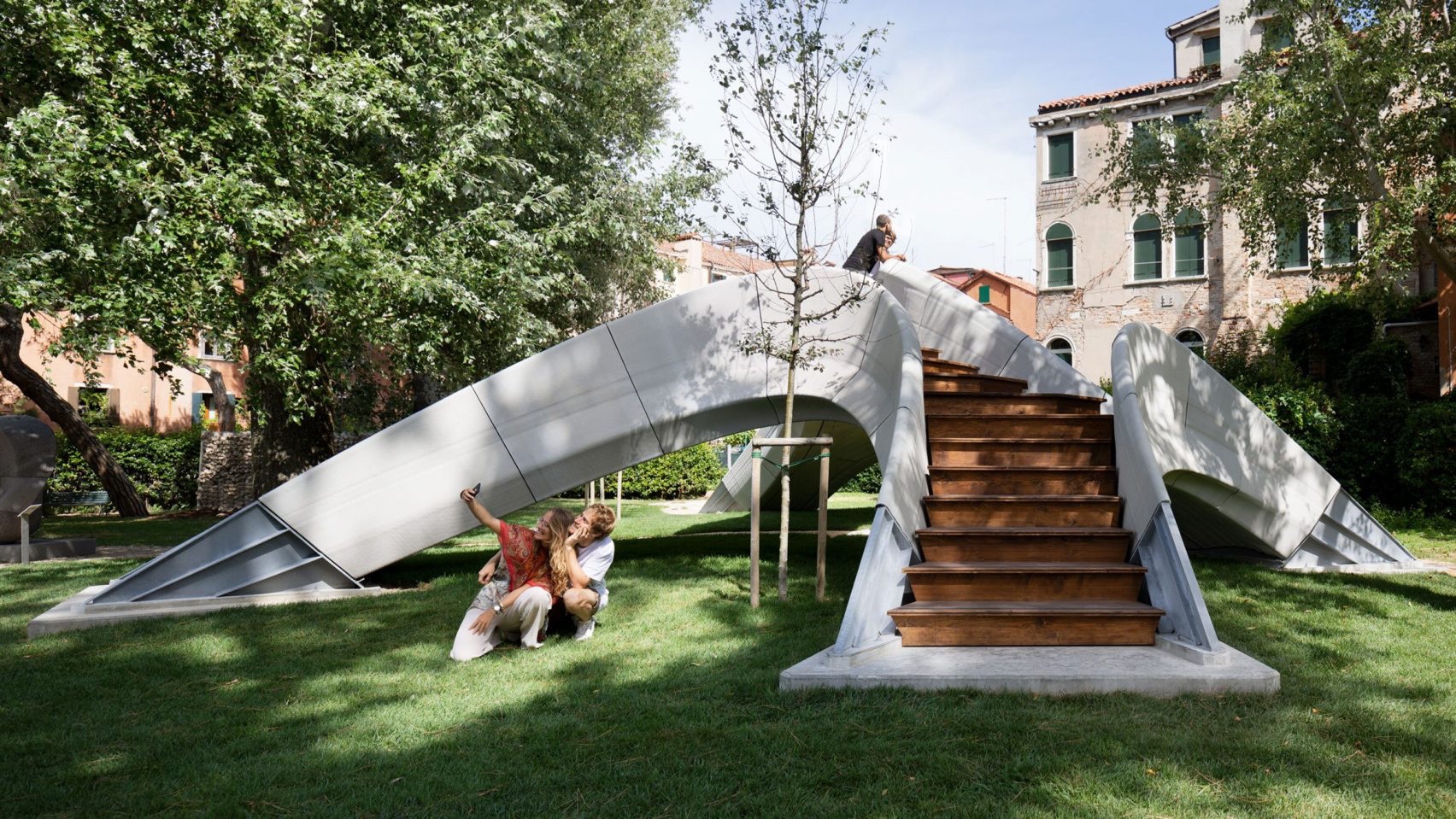“Bridge” is a word that frequently comes to mind when you think about 3D printing. It’s a bridge technology, one that could help humanity make the transition from the fossil fuels era to the era of renewables; it can be used to bridge the gap in supply-chain disruption scenarios. Also, you can use it to make bridges!

Swiss company Holcim, the building materials division of Holcim Group (previously LafargeHolcim), is currently showcasing in Venice, Italy a circular, unreinforced bridge that technicians printed with a six-axis robotic arm. Holcim has named the modular bridge product Striatus, and used a custom-made proprietary “ink” to manufacture it.

While Holcim is the biggest name involved in the project, it was a collaborative effort between Block Research Group at Swiss university ETH Zurich and the Computation and Design Group at Zaha Hadid Architects, who built the bridge. The structure measures 16 meters long and is comprised of 53 hollow blocks held in place by compression alone. This means that it can be disassembled, reassembled, and, if need be, recycled.
This is a much more upbeat story than some of the other recent headlines Holcim Group has been making, largely involving charges of crimes against humanity (!) brought against it in France’s highest court, related to the actions of the French company Lafarge in Syria between 2011-2014, before it merged with Holcim in 2015:
“The group halted its Jalabiya plant in northern Syria – almost 100 km (63 miles) from Raqqa – in 2014 when the factory came under attack from militants. But it continued to operate in the area and maintain local staff after the country was beset by conflict in 2011 and as surrounding areas gradually came under the control of armed groups such as Islamic State.” – Reuters
Coupled with the company’s rebranding, is it possible the Striatus bridge project could be an attempt to deflect away from the negative publicity it’s been receiving? In a recent post, I mentioned the great, unsung environmental conundrum of concrete, a commodity responsible for an estimated 4-8 percent of global CO2 emissions, but which garners far less attention than things like automobiles or industrialized meat production.
According to Holcim CEO Jan Jenisch, “3D concrete printing can reduce up to 70 per cent of materials with no compromise on aesthetics or performance.” This seems a bit hyperbolic according to the industry’s current state of research on the topic, but life cycle assessment studies on 3D printing are of course still in early stages overall, and Jenisch certainly appears correct that performance-wise, you don’t seem to lose anything by using 3D printing.

More interesting than the particulars of the bridge itself, however, is the very sophisticated example of “greenwashing” going on here. Greenwashing is usually used to refer to the practice undertaken by corporations or industries as a whole which make an especially detrimental impact on the environment, whereby they highlight specific, relatively eco-friendly projects they’re working on to garner public relations’ goodwill. In this case, if this is indeed what Holcim is engaged in, an eco-friendly, human interest story is seemingly being utilized to divert public notice away from a scandal that doesn’t have much to do with the environment, at all.
This isn’t to say that the Striatus isn’t a fine bridge! It’s a masterpiece of engineering. But if 3D printing’s potential to augment or even drive a society-wide shift to sustainability is just used for the same old PR games we’ve all become so accustomed to, the technology will end up losing the goodwill it has accumulated before it even gets a chance to deploy it on a large scale.
Subscribe to Our Email Newsletter
Stay up-to-date on all the latest news from the 3D printing industry and receive information and offers from third party vendors.
Print Services
Upload your 3D Models and get them printed quickly and efficiently.
You May Also Like
Consolidation in AM: How 2025 Is Shaping the Industry’s New Normal
The first half of 2025 has been marked by a clear shift in the additive manufacturing (AM) industry. Companies are no longer just focused on developing new tech by themselves....
Etsy Design Rule Change Reduces Selection of 3D Printed Goods
Online marketplace Etsy has implemented a rule change requiring all 3D printed goods on the site to be original designs. The update to the site’s Creativity Standards states, ¨Items produced using...
U.S. Congress Calls Out 3D Printing in Proposal for Commercial Reserve Manufacturing Network
Last week, the U.S. House of Representatives’ Appropriations Committee moved the FY 2026 defense bill forward to the House floor. Included in the legislation is a $131 million proposal for...
Transforming From Tourist to Native: Duro CEO Michael Corr Explains Why the Company Rebuilt its PLM Software on AI
In these early innings of the AI boom, many market analysts have expressed concern that AI spend has gotten too far ahead of the technology’s proven ability to deliver significant...
































